Abstract
Pigeons working for food on a multiple variable-interval 1-min—variable-interval 4-min schedule were subjected to variations in body weight, presumably causing changes in hunger. The proportion of responses in each component approached and eventually reached the proportion of reinforcements as body weight increased. This effect follows from the matching-law interpretation of contrast in multiple schedules.
Full text
PDF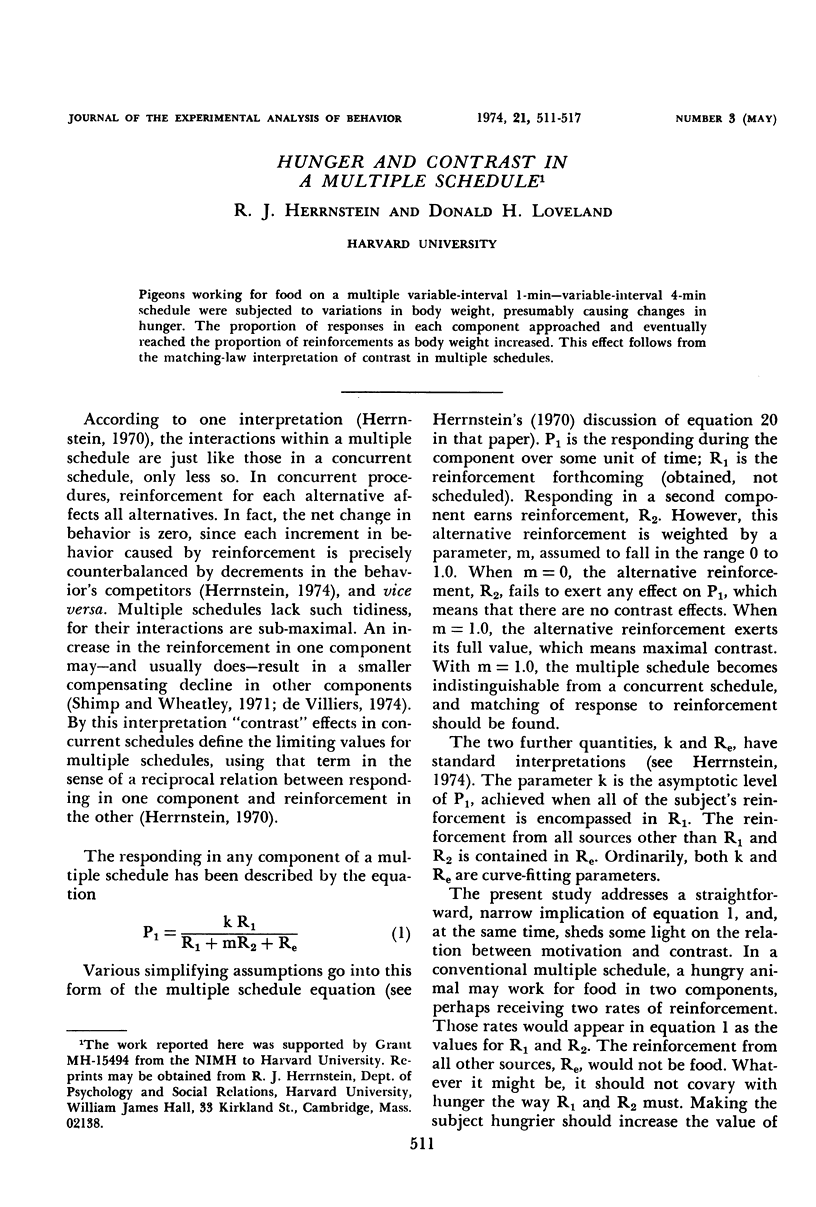
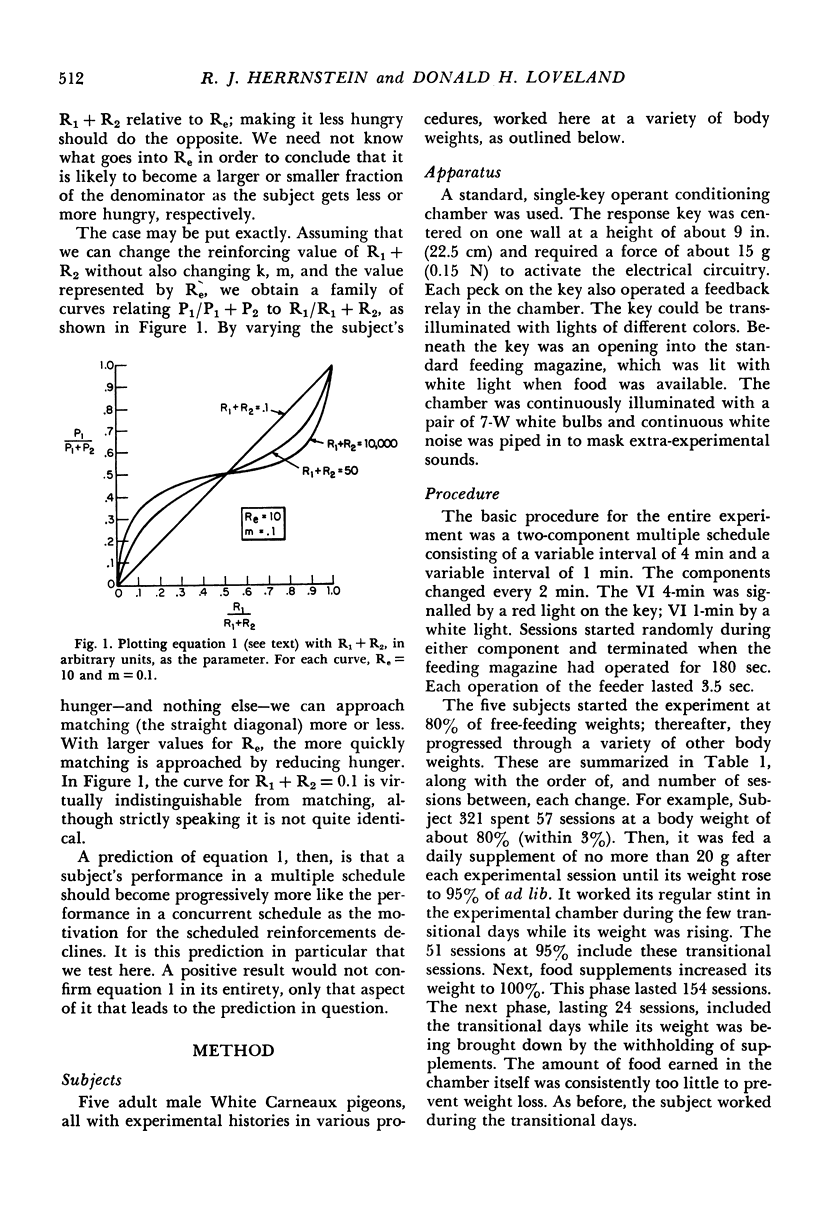
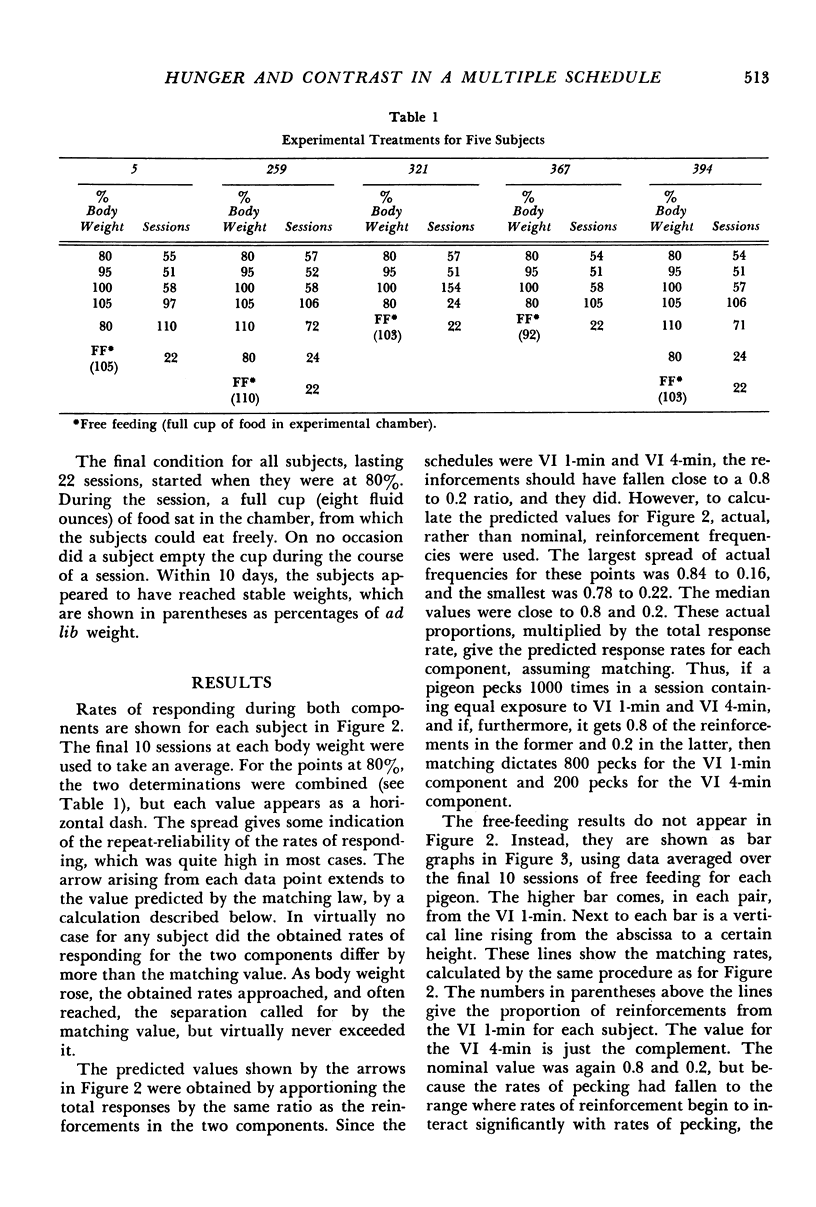
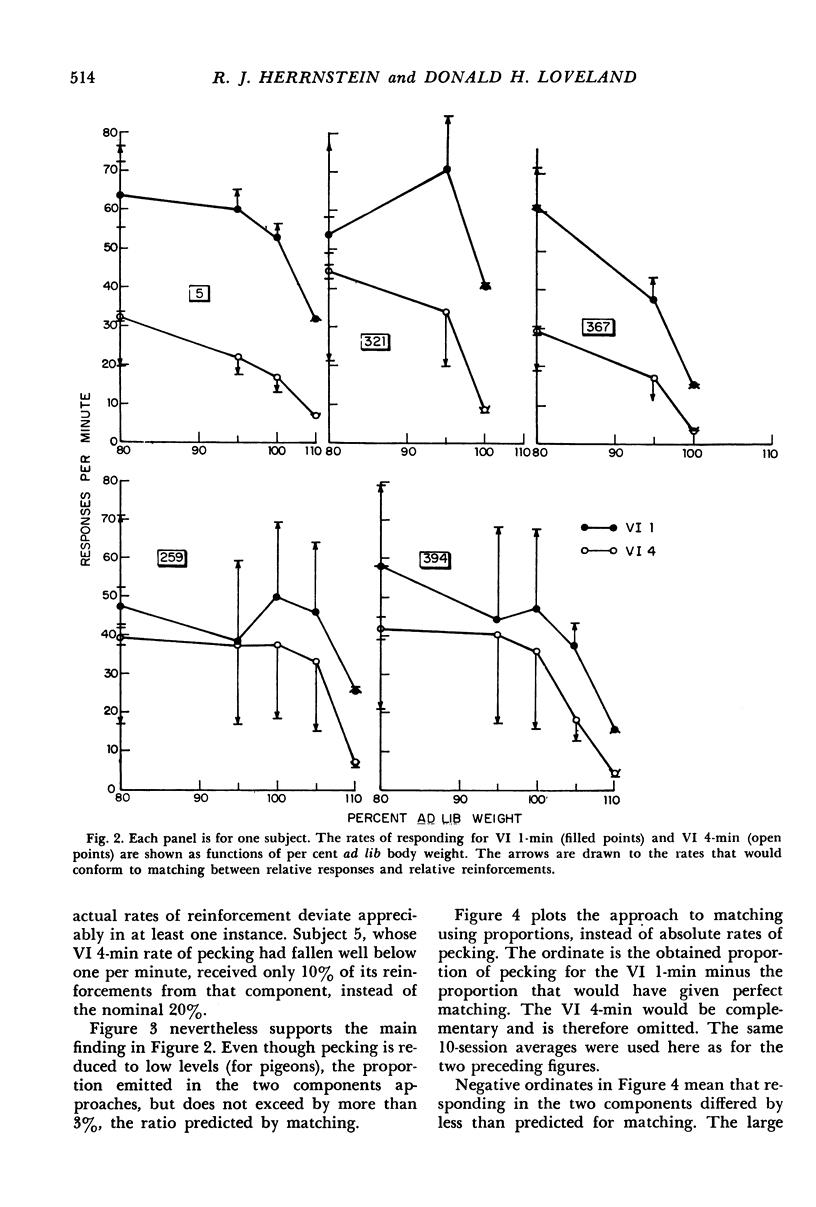
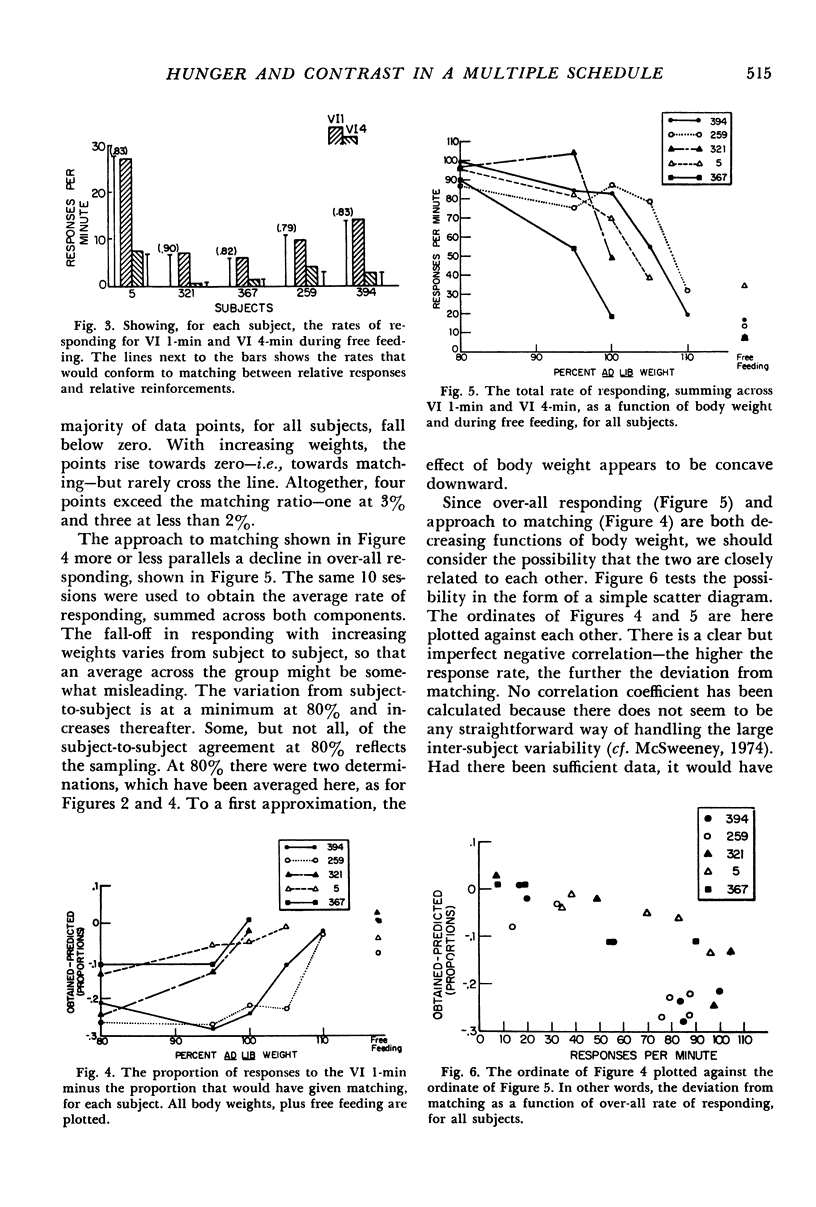
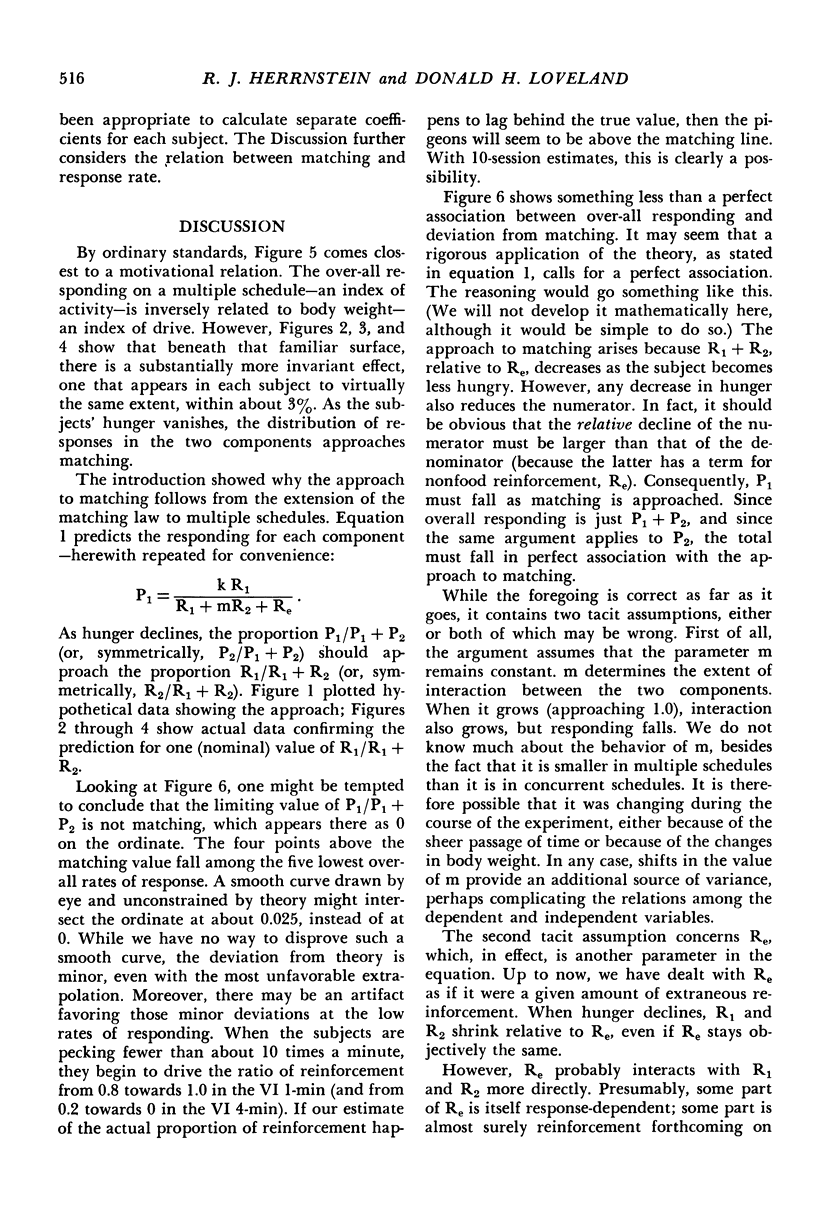
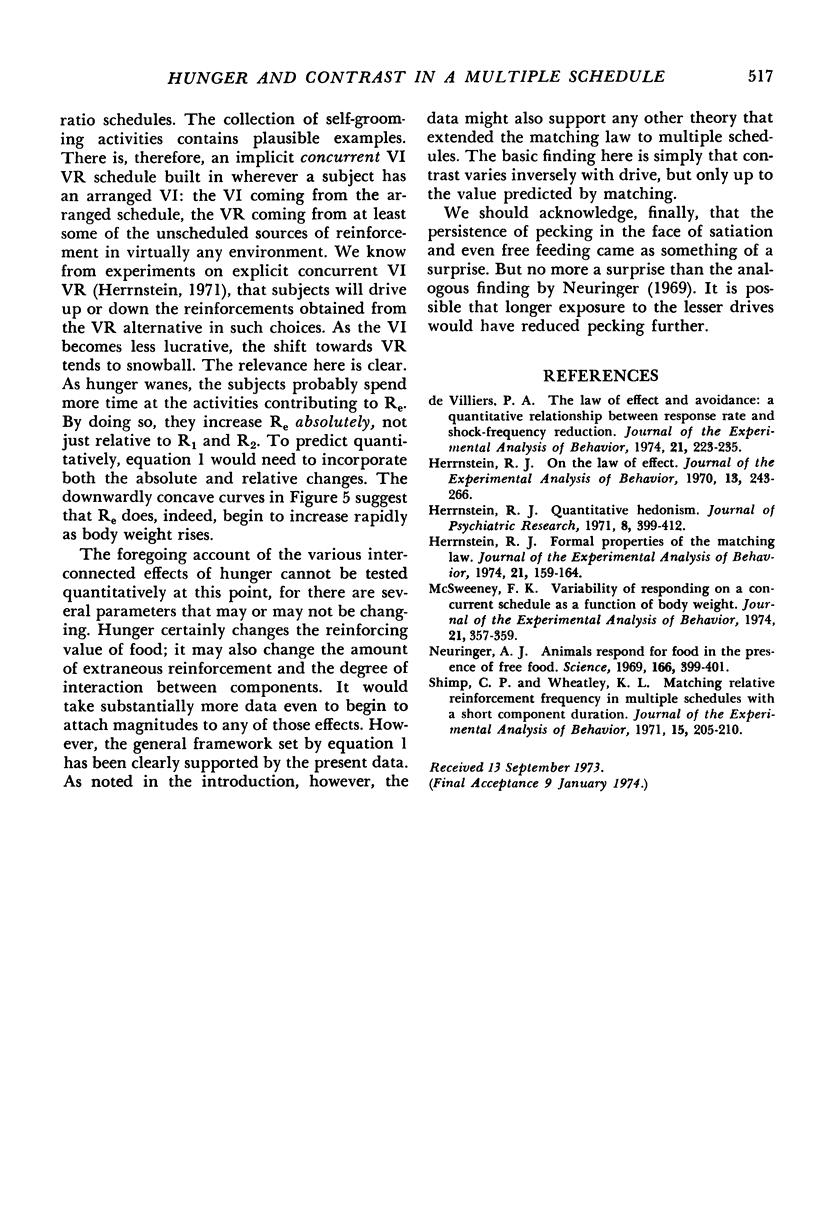
Selected References
These references are in PubMed. This may not be the complete list of references from this article.
- De Villiers P. A. The law of effect and avoidance: a quantitative relationship between response rate and shock-frequency reduction. J Exp Anal Behav. 1974 Mar;21(2):223–235. doi: 10.1901/jeab.1974.21-223. [DOI] [PMC free article] [PubMed] [Google Scholar]
- Herrnstein R. J. Formal properties of the matching law. J Exp Anal Behav. 1974 Jan;21(1):159–164. doi: 10.1901/jeab.1974.21-159. [DOI] [PMC free article] [PubMed] [Google Scholar]
- Herrnstein R. J. On the law of effect. J Exp Anal Behav. 1970 Mar;13(2):243–266. doi: 10.1901/jeab.1970.13-243. [DOI] [PMC free article] [PubMed] [Google Scholar]
- Herrnstein R. J. Quantitative hedonism. J Psychiatr Res. 1971 Aug;8(3):399–412. doi: 10.1016/0022-3956(71)90033-1. [DOI] [PubMed] [Google Scholar]
- McSweeney F. K. Variability of responding on a concurrent schedule as a function of body weight. J Exp Anal Behav. 1974 Mar;21(2):357–359. doi: 10.1901/jeab.1974.21-357. [DOI] [PMC free article] [PubMed] [Google Scholar]
- Neuringer A. J. Animals respond for food in the presence of free food. Science. 1969 Oct 17;166(3903):399–401. doi: 10.1126/science.166.3903.399. [DOI] [PubMed] [Google Scholar]
- Shimp C. P., Wheatley K. L. Matching to relative reinforcement frequency in multiple schedules with a short component duration. J Exp Anal Behav. 1971 Mar;15(2):205–210. doi: 10.1901/jeab.1971.15-205. [DOI] [PMC free article] [PubMed] [Google Scholar]


